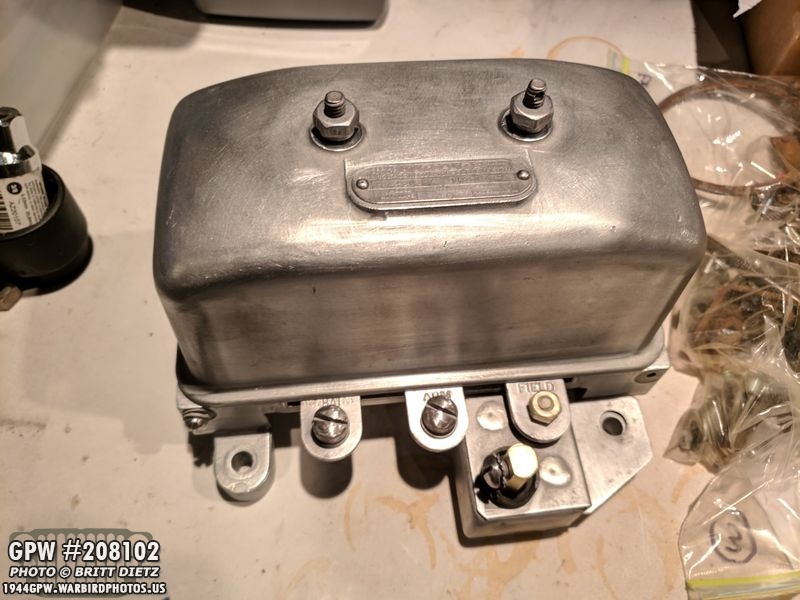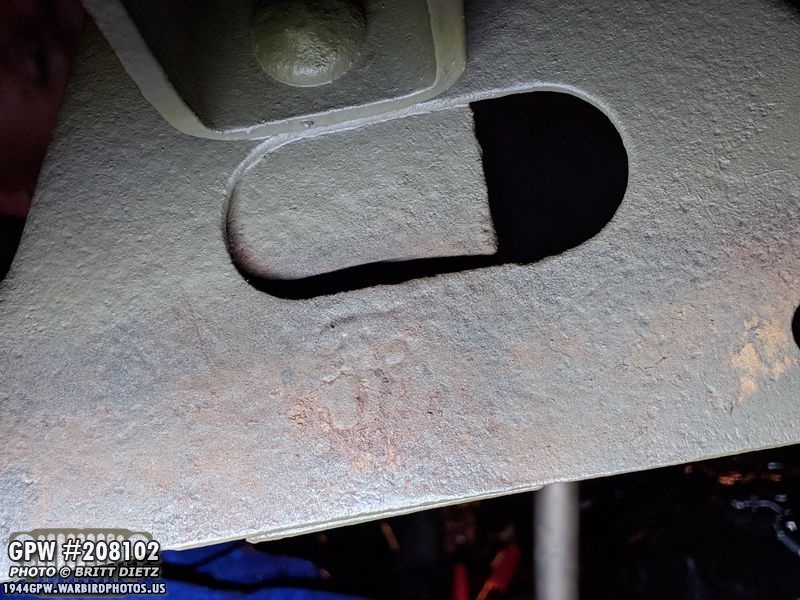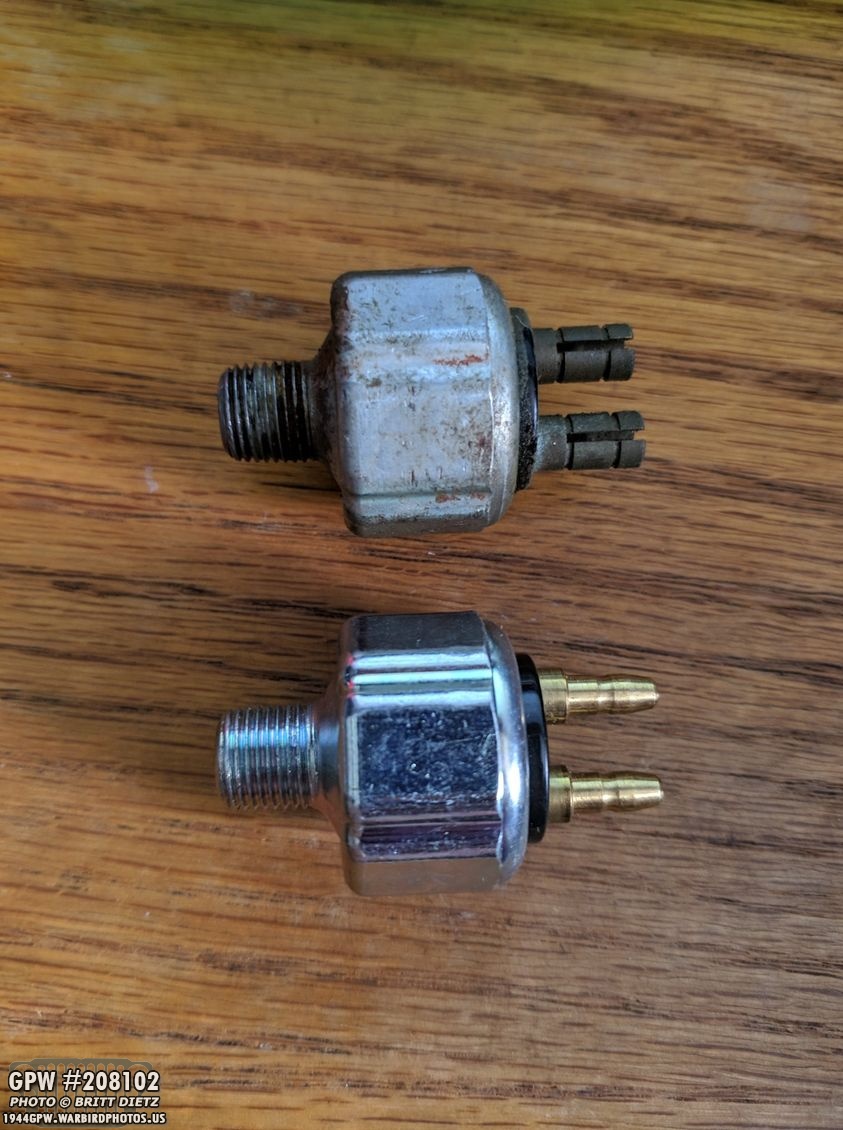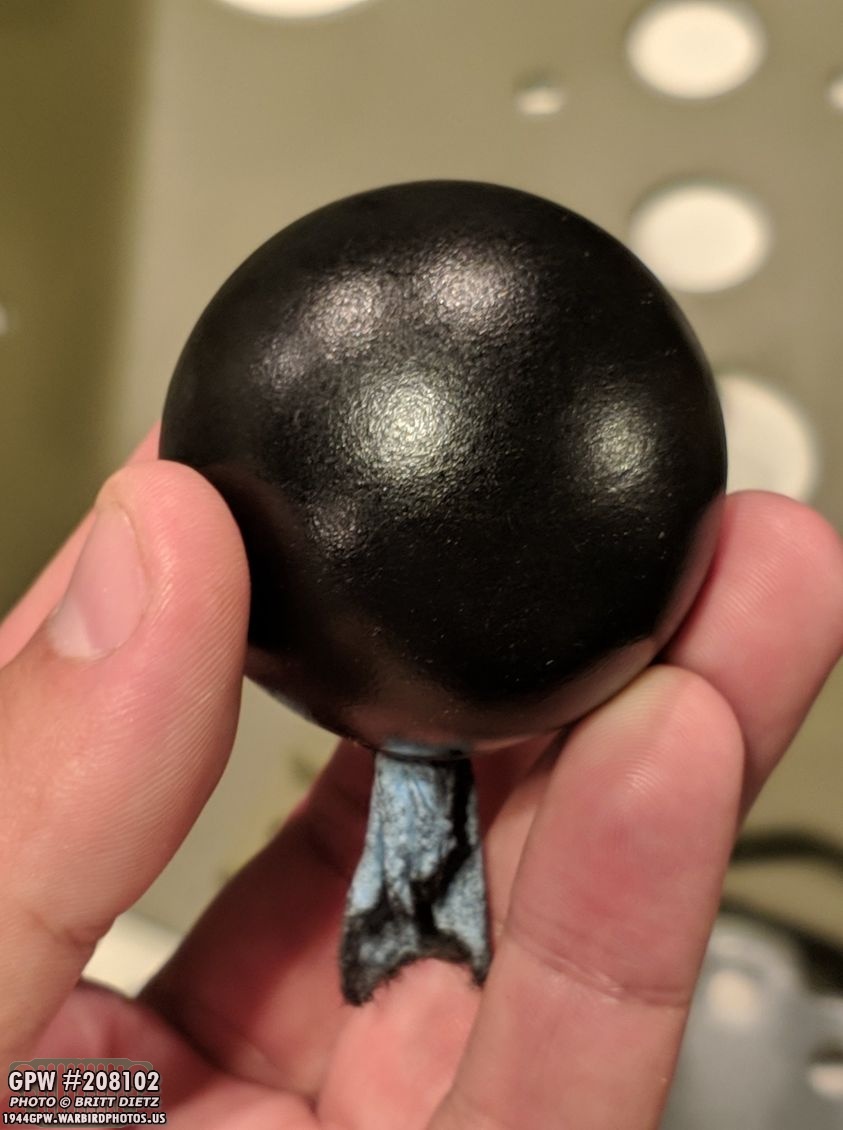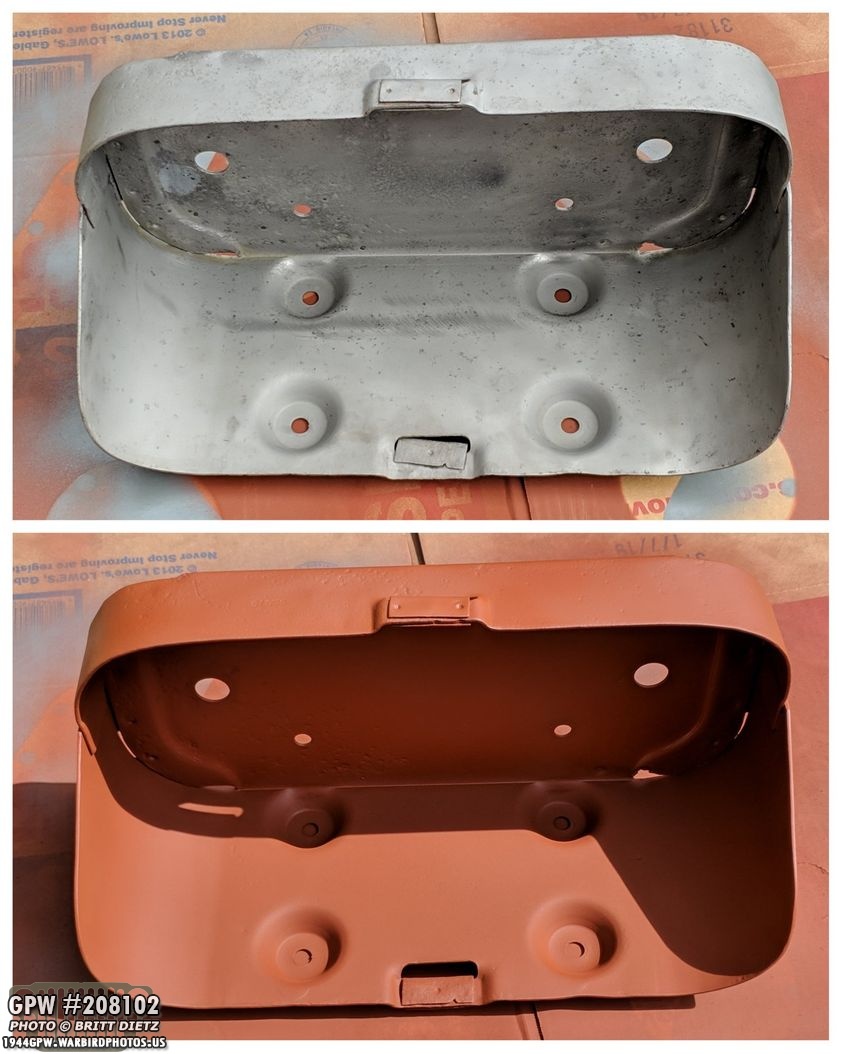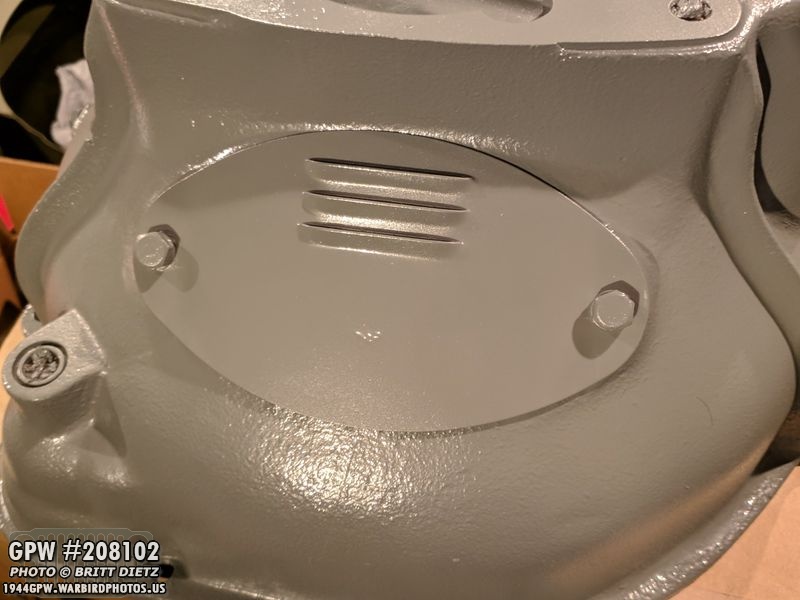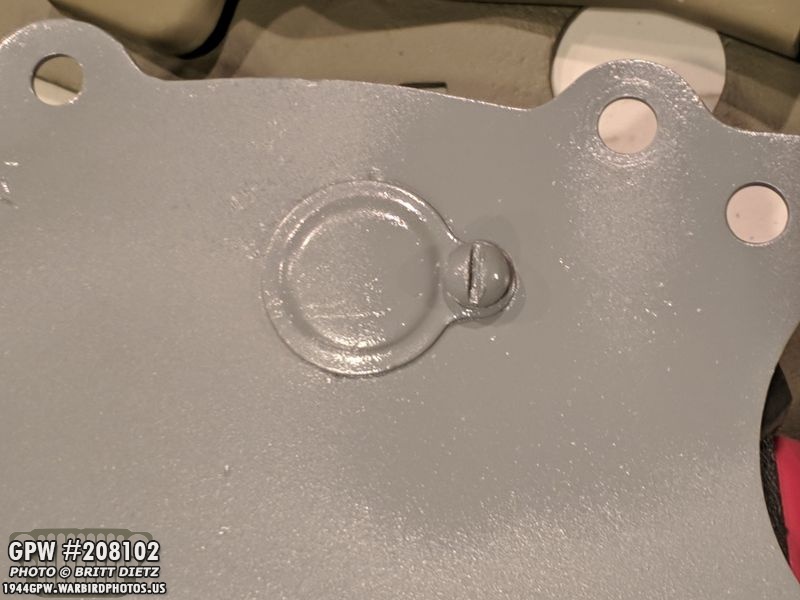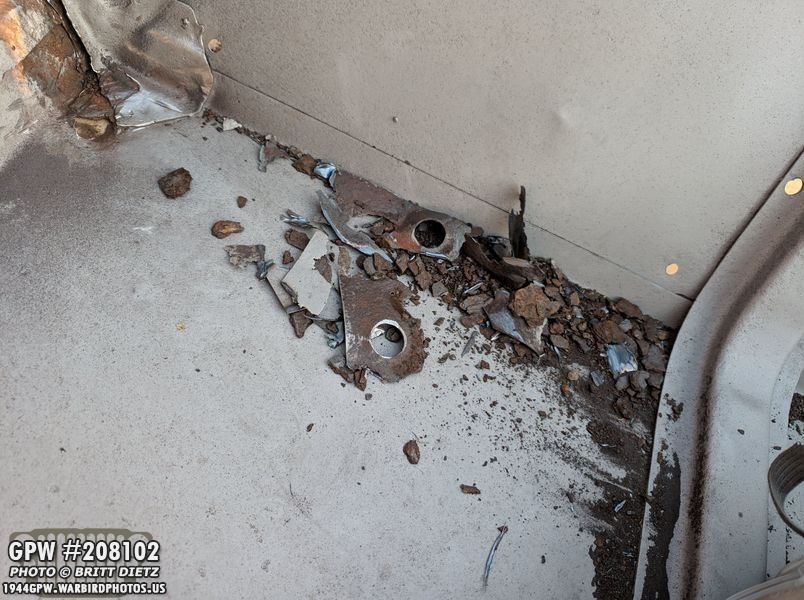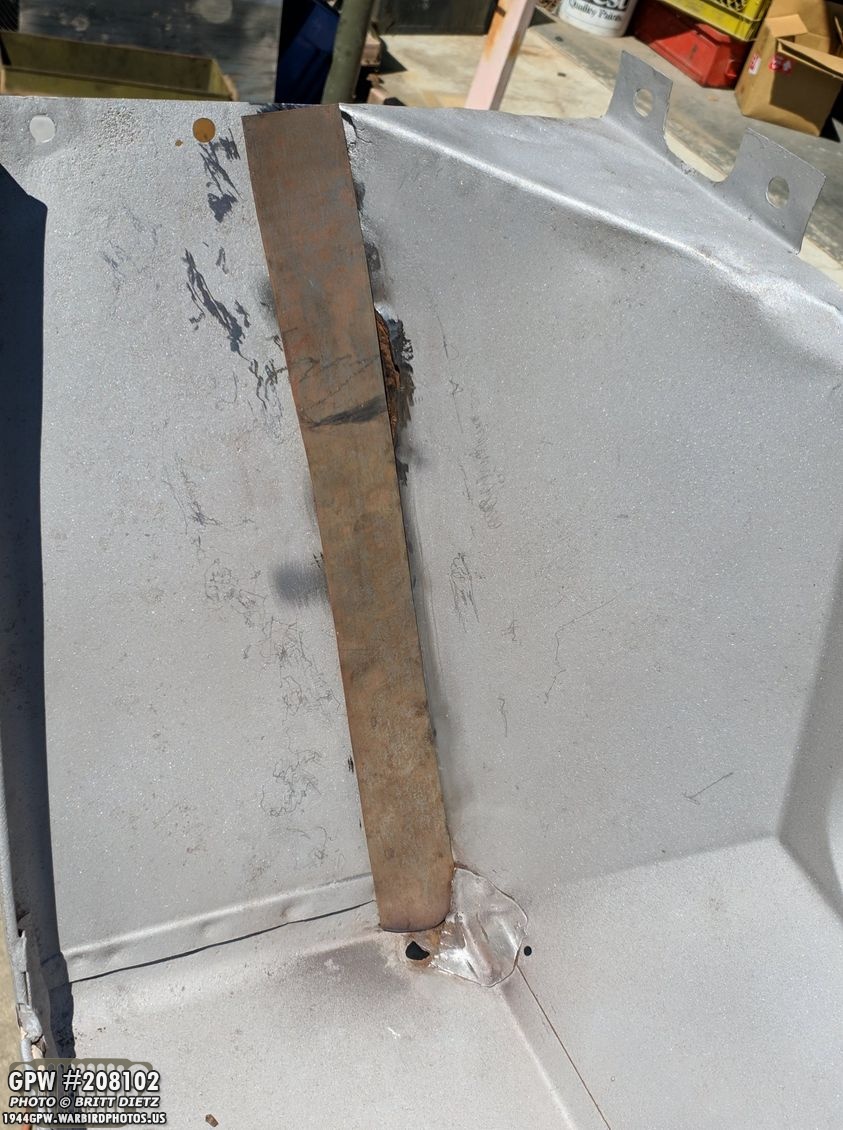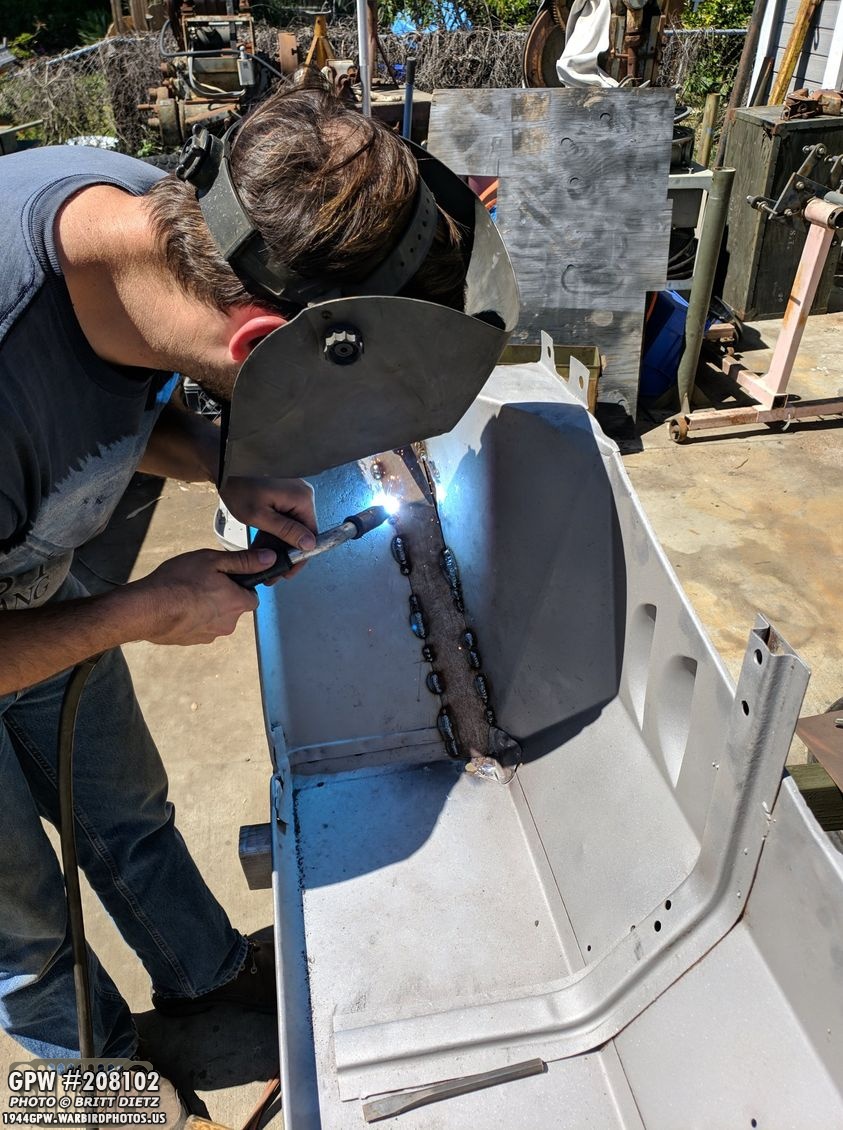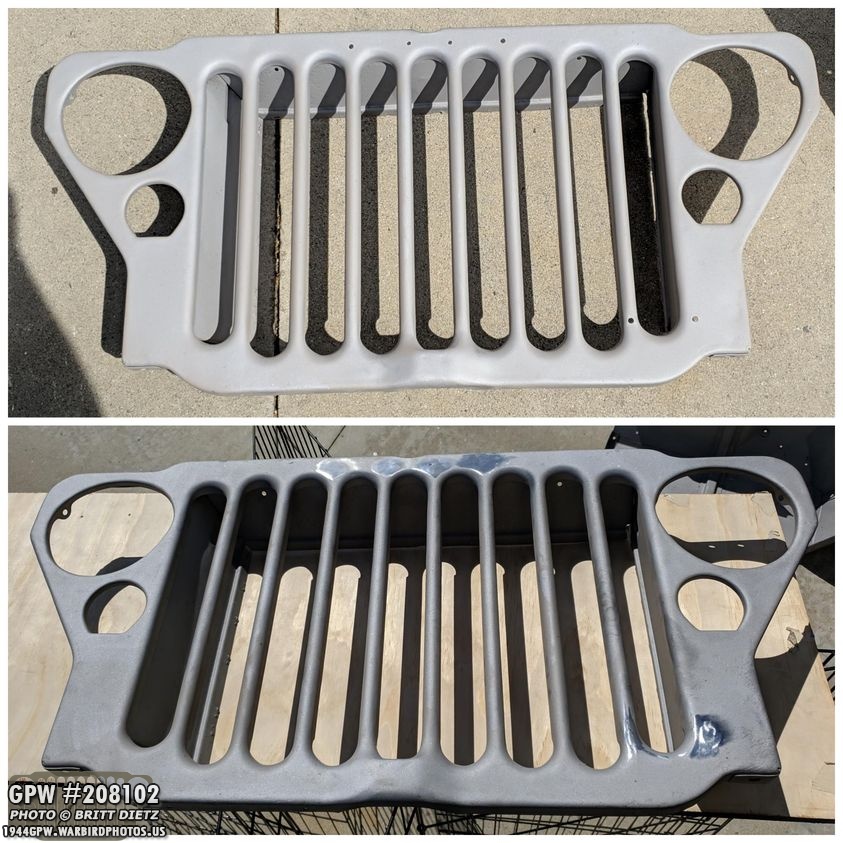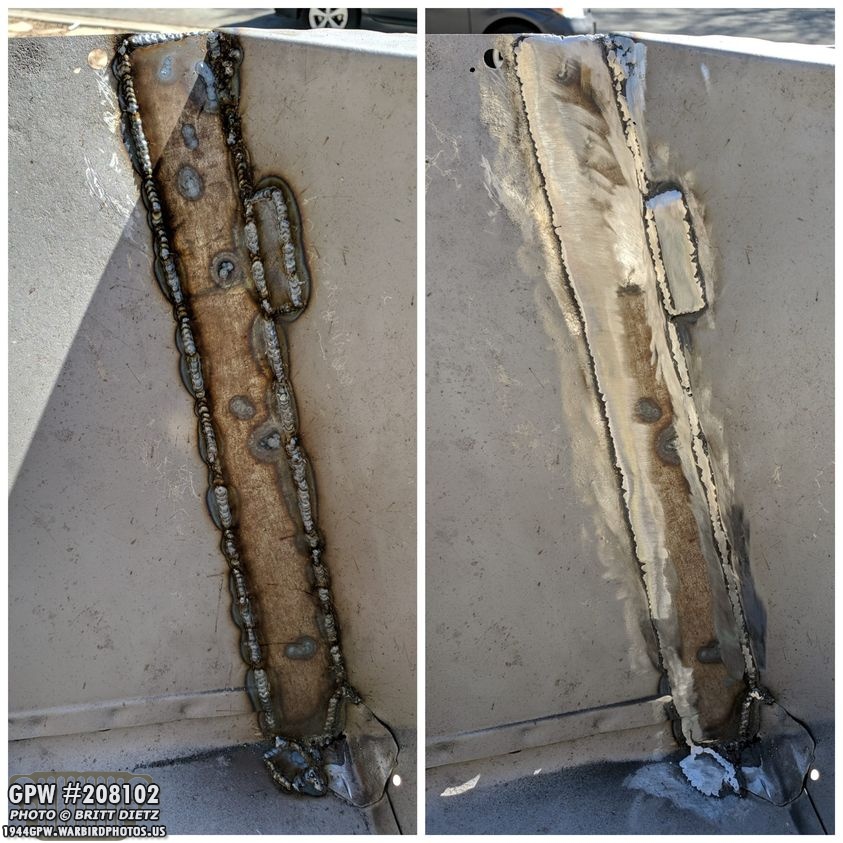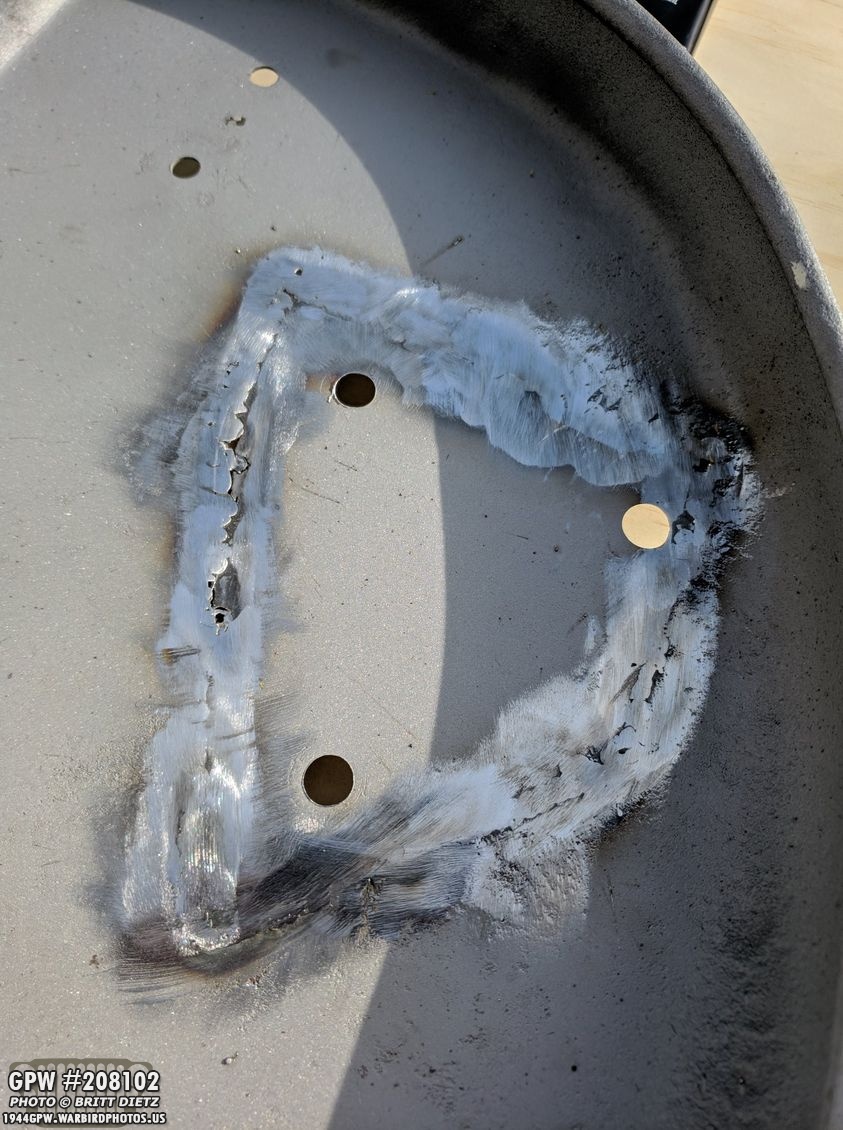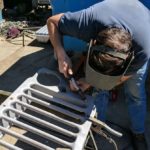 Welding Time!
Welding Time!
This has been another busy week with lots of activities on the Jeep, from finishing the Voltage Regulator to finally welding one of the fenders and grill! Then from welding to sanding and adding filler to the gaps left for a good finish.
My friend Tom welding my Jeep’s fender! More on that in a few… keep clicking through!
First up is the voltage regulator! This is how the take-off regulator looked when I received it from eBay. Take-off means someone took it off another restoration and decided to sell it so it’s in ‘as is’ condition.
After spending time wire wheeling all the paint, dirt, and grime off then putting it through the sandblaster. Finally, it was cleaned and sanded to bring out the metal. Looks amazing just like this (and if you remember from previous updates the inside looked brand new!)
Ta-da! Just about all done! It’s been fitted with new reproduction cork gaskets and painted with ‘hammered crackle’ finish similar to the WW2 style. The finish didn’t quite come out as crackled as I’d like, but it’s close enough. What’s left now is to repaint the red in the data tag, re-screw/rivet the tag back onto the cover, and seal the lead seal (see next image for what that is)
The lead seal is a ‘tamper indication’ seal consisting of that little wafer attached to a small metal wire that goes through a hole in the right side top screw post. You use a special tool to crush the seal locking in the wire. Then the only way to open the regulator would be to break the seal and remove the wire, thus an early tamper detection. The regulator was crucial for regulating the power going through the Jeep to the generator.
Another shipment arrived from &Ron Fitzpatrick Jeep Parts, this time with the missing top gussets for the front frame, a correct GPW style fan belt, and a horn hardware kit.
If you recall from the previous update, I had to cut off a welded on L bracket to the end of the frame when removing the incorrect front bumper. Cutting it off at the original frame ending line more or less makes it as close to possible to how it should be, with a little extra metal. So, with the upper gussets, I got from RFJP, I can put together the correct frame horns and add the correct bumper.
Test fitting the gussets, it looks like It’ll be a perfect fit! They will need to be repainted, however, and I will need to figure out how to either rivet or ‘fake rivet’ the gussets onto the frame.
When I saw the large Ford Fs stamped on the reproduction upper gussets, I decided to check the original bottom gussets to see if they had a similar F… it’s faint, but sure enough, they do!
Another item that arrived was the replacement stop light switch. Brake pressure coming up through where it screws in causes an electrical connection, in turn, causing the brake lights to come on with this little part. The top one was the original one, which worked fine, but was accidentally hit with paint (oops) and I found out that the new GPW wiring harness I got requires male ends, not female ends.
I decided to sand and repaint the three (only two shown) shifter level ball heads. After painting them with black I hit them with a sealer for better protection.
Close up of the main shifter ball head, looks brand new!
It’s time for the bumperette that came back from the sandblaster to join its twin and get some primer paint. First was cleaning all the sandblasting dust off, which I use rubbing alcohol as it tends not to rust the metal vs water.
Bumperette primered with rex oxide along with the spare tire support bracket.
Another item I’ve put off finishing for months now is the jerry can (fuel can) holder. It needed some work to fill some light holes, which I used JB Weld metal, and it worked well. Here’s the before and after painting with the red oxide primer.
I reinstalled the maintenance door on the bell housing in prep for its eventual reinstall on the frame hopefully soon. I also hit the bolt heads with some Ford Engine Gray paint to match.
I also reinstalled the little swivel cover on the timing hole. You slide open this little cover to see the timing marks on the flywheel.
Now time to get into the big project of the week, the driver’s side fender and grill! As a reminder, here’s the cancerous rust on the driver’s fender inside. On the other side of this panel is where the body tub and the fender are bolted together. That strip of metal is far too gone to save, and the rust in between it and the fender wall is pushing apart as the rust expands. So I’ll have to remove that strip and bad rust.
It took a few hours of wire wheeling and grinding, but I got as much off as I could. A lot of it, once I got that torn up strip off, just flaked off because the rust was so bad.
Here’s a look at all the cancerous rust and what was left of the metal strip.
I took my grill and fenders over to a friend Tom Read’s shop. My friend Tom Goodhope, who’s also restoring a Jeep, helped me out with some welding. Sadly, I was pressed for time so we only got the grill and driver’s fender done. Here’s Tom G welding closed the incorrect holes on the grill.
Next up, to tackle that bad rust section on the driver’s fender. We decided after a bit of debate (to cut out or to patch) that we’d weld on a long strip of metal and re-drill the holes for the mounting bolts. Here’s the strip of metal as we made size adjustments to fit.
A look at the other side, which isn’t as bad, but will need some work.
Tom Goodhope welding the metal strip on. I have never welded before, so I got a little bit of welding practice (very minimal) in but spent most of the time observing how to weld. It actually made me look more forward to eventually repairing my body tub in the future. He did great work on the fender.
Switching back to the grill, here’s a look at the before and after… top is when I got it back from the sandblasters. Bottom is after welding closed the 6 holes (4 on top, 2 on bottom right) and then using a flap disk to sand down the welds smooth. It will still need small cracks filled in.
At the top is a look at the grill after welding and flap disk sanding. That small imperfection will need to be filled, which is no issue with spot filler (basically bondo) shown at bottom. It’s spread on like spackle and then sanded down smooth.
All sanded and as smooth as I can get it (top) and then painted with the first coat of red oxide primer (bottom)! Looks brand new!
The next day I hit the backside with the red oxide primer as well. I feel like I’ve singlehandedly kept SoCal’s Red Oxide spray paint in demand at all the local Lowes the last few months.
Time to tackle the fender now! First, I took the flap wheel and sanded down the welds as best I could without really compromising the welds themselves. I decided to not totally smooth it as you won’t be easily able to see this area inside the wheel well behind the wheel.
But, I did hit it and a few other spots with rust converting spray just in case any other rust was hidden that couldn’t be hit by the sandblaster. This should stop the rust.
Then it was time to hit the outside. Again, this area won’t be seen at all because it’s where the body tub and the fender mount together, so I didn’t need to make it perfect. But I wanted to try and make it look better. So I filled all the smaller holes with the spot filler, sanded them as best I could (wasn’t a perfect job) then hit it with the rust converting spray, again, just in case. Finally, I used thicker bondo to fill up the larger holes to make sure moisture can’t get in there…
And then finally hit it with a ‘filler’ primer that helps fill smaller imperfections. Again, it’s not perfect, but it’s MILES better than what it was, plus it won’t be seen anyway! Just need to drill out the three holes.
On the side of the fender were two other holes, I decided to fill those and get it a good as I could since they would be seen. Using some bondo (several layers a little at a time with sanding in between) I got it pretty good looking after the filler primer spray.
Here is the underside of where the blackout drive light mounts to the fender after we reinforced the welding done when the Jeep was last restored before me (looks like this triangle piece was replaced due to rust back whenever), so now it should be more structurally sound.
After using the flap disk to sand down the welds…
Then after spot filler, sanding, and the filler primer! There’s one little spot that’s left, but this is on the inside of the fender, so I wasn’t concerned as well.
Same thing with the top side… sanded as flat as I could with the flap disk. This top side had a lot more gaps and areas that needed to be smooth. Originally there was like a quarter inch thick slab of bondo on the entire fender to smooth it out. It even covered the original Ford F stamp (top right), so I was only going to use as much spot filler as I really needed.
It took two tries to get it filled… the first batch got it mostly there, then I used some filler primer. Another thin batch of spot filler…
And it’s nearly perfect! I probably used less than 5% of the filler the previous restorers used. I also hit some black rust converting spray into the holes where the wire from the blackout drive light goes into the inside fender channel just in case.
One of the connecting posts that connect the fender to the frame had a few holes as well, not bad, and easily fixable with some filler. Looks great now!
After spending about 4 days on the fender working with the flap disk sander, spot filler/bondo, and then hand sanding a lot… I was able to hit the inside of the fender with the first coat of red oxide primer! Looks great for being almost 75 years old! I still need to drill out the three mounting holes.
Finally, I turned over the radiator and began work on the other side fixing the thin brittle copper fins. Using two small flat head screwdrivers I carefully bent back all of the fins I could, and the result looks so much better! I’ll need to hit it one final time with OD Green paint since it revealed some of the copper. That’s it for now, till next update!


